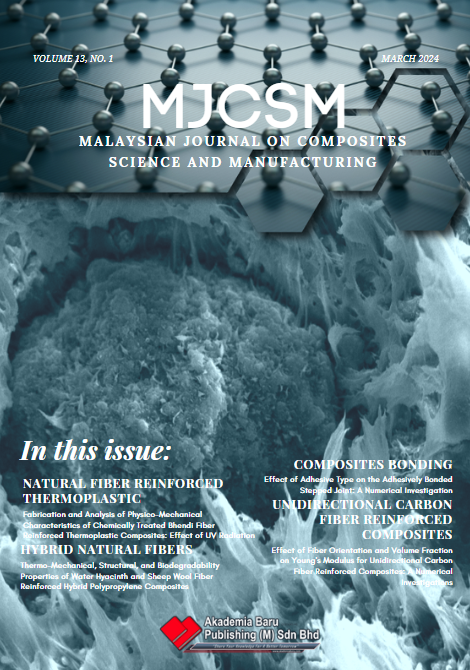Effect of Fiber Orientation and Volume Fraction on Young's Modulus for Unidirectional Carbon Fiber Reinforced Composites: A Numerical Investigation
DOI:
https://doi.org/10.37934/mjcsm.13.1.4554Keywords:
Carbon fiber, fiber orientation, volume fraction, modulus of elasticityAbstract
The modulus of elasticity of unidirectional fiber-reinforced composites greatly depends on the fiber orientation and the fiber volume fraction. This paper investigates the effects of fiber orientation and fiber volume fraction using the commercially available Finite Element Analysis (FEA) software Abaqus. Carbon fiber is the reinforcing material, while epoxy is used as the matrix. Representative Volume Element (RVE) of the unidirectional carbon fiber reinforced composites are modeled in Abaqus, and the unidirectional tensile test is simulated to determine the modulus of elasticity for different fiber orientations and fiber volume fractions. The numerical results are verified by previously published results and by experimental results. It is found that the modulus of elasticity of the composite is maximum when the fiber inclination angle is 0°, i.e., the fibers are placed along the loading direction. As the fiber orientation angle increases, the modulus of elasticity also decreases and is almost constant after 45°. A linear increase in modulus of elasticity is observed for an increase in fiber volume fraction. This model will help the researcher to select the appropriate fiber orientation and volume fraction for a specific application.
Downloads












